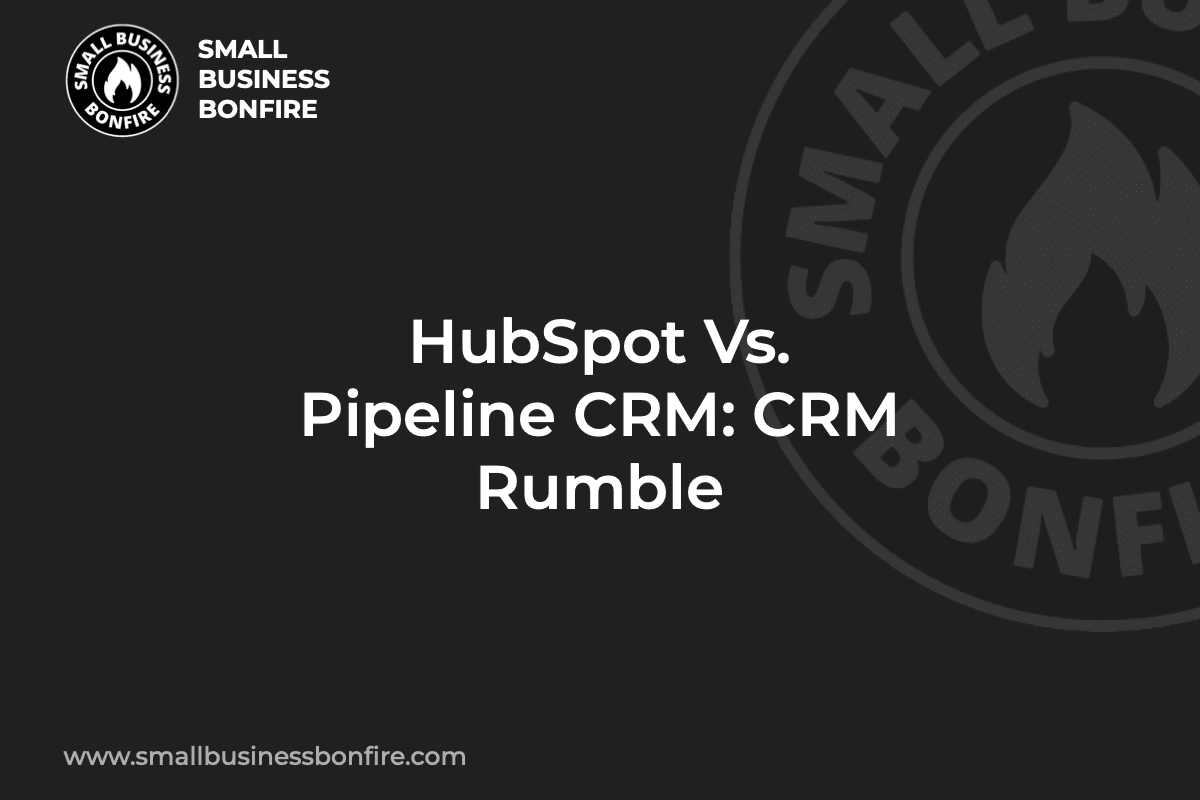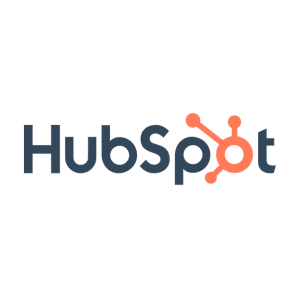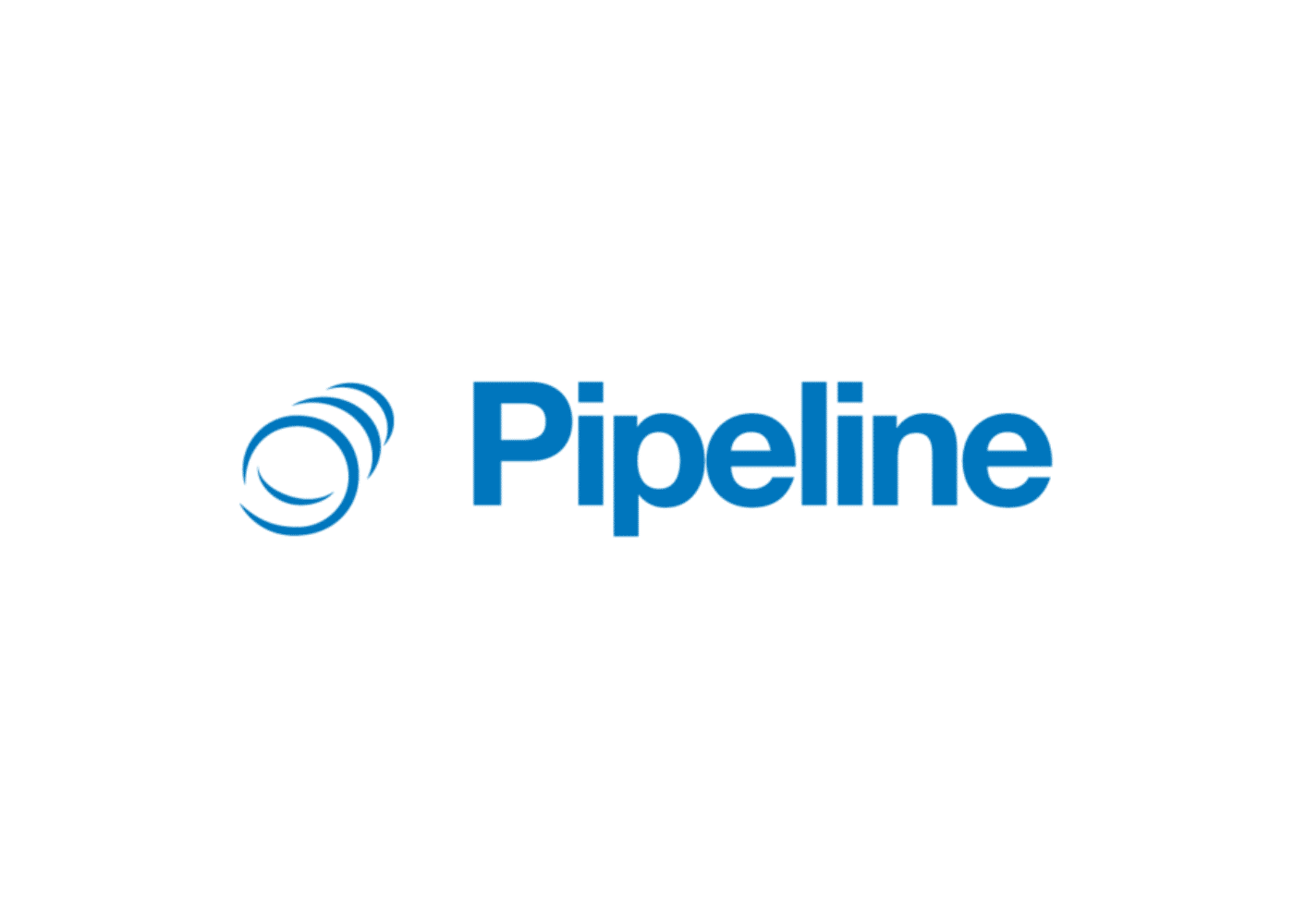Struggling to choose between HubSpot and Pipeline?
Choosing the right CRM can be a real pain, especially when you’re comparing leaders in the field like HubSpot and Pipeline CRM.
I’m AJ—here to help you make the right decision. I’ve spent the last decade building my business to a successful multiple seven-figure exit (using every platform under the sun).
My mission with Small Business Bonfire (SBB) is to help fellow entrepreneurs do the same (without the same pitfalls).
So, let’s talk about the main event—HubSpot vs. Pipeline—two powerhouse CRMs in their own right. We put them head to head to see which one would come out on top.
Let’s break it down!
How Did We Evaluate Pipeline CRM and HubSpot?
We did a deep dive on Pipeline CRM and HubSpot.
We compared both platforms in terms of the following:
- Pricing & Free Version
- Top Features
- Customer Service
- Integrations
- Ease of Use
- Best Mobile App
- Knowledge and Learning Center
- Limitations
- Which One We Think is Best for Small Businesses
How We Objectively Test Each Platform:
AJ's got a knack for kick-starting businesses, putting them on autopilot, and setting them up for acquisition. Over the past decade, he's been right in the thick of things with hundreds of small businesses, helping them with just about everything under the business sun. If you need advice on software suites and choices? AJ's your guy.
We roll up our sleeves and dive into the top CRM features we think are pretty crucial for small businesses. Stuff like reports and analytics, options to customize your pipelines, and the ability to link up with other apps and services. We know what makes small businesses tick, so we know what features they need to get the job done.
Money matters, folks! When it comes to picking a CRM system, price is usually the deal-breaker. We give a big thumbs up if a provider charges $30 or less per user each month for their starter plan. Extra brownie points for throwing in a freebie plan or trial, options to scale up or down as needed, and the freedom to pay monthly or yearly. We're looking for flexability for small businesses.
We all know support is mega important when you're choosing a CRM platform. This is especially true for those smaller businesses or sales teams who can't afford to have tech wizards on their payroll. We put our detective hats on to see if these companies offer round-the-clock support, and we looked at the different ways you can get help. We're talking live chat (like, real-time convo), email tickets, a good old-fashioned phone call, and self-service tools (for the DIY-ers out there).
When you're in the business of picking a CRM, integrations are like the secret sauce that takes your burger from 'meh' to 'mind-blowing'. Imagine, all your favorite apps and tools, working together in perfect harmony, making your workflow smoother than a fresh tub of Nutella. When we review a CRM, we look at the integrations most SMB owners are looking for.
When you're reviewing a Customer Relationship Management (CRM) system, it's essential to pay close attention to its ease of use. After all, a CRM is as beneficial as its usability. A simple, intuitive interface saves you and your team a great deal of time and headache. When we're reviewing each CRM, this is a crucial aspect that we look for.
The importance of Mobile CRM cannot be overstated in today's digital age. It's essential for fostering strong customer relationships and managing business activities. Mobile access to CRM makes it possible for sales teams to update and access customer information in real time, improving efficiency and ensuring up-to-date data. Mobile CRM can have a massive impact on SMBs, so thoroughly testing it is essential for each one of our reviews.
HubSpot Vs. Pipeline CRM Comparison Chart
We put both HubSpot and Pipeline CRM to the test, thoroughly examining them to give you the nitty gritty.
Here’s a quick overview of our in-depth comparison.
HubSpot Vs. Pipeline CRM: Pricing
Pricing is a significant factor when it comes to selecting a CRM platform.
Let’s see how HubSpot and Pipeline CRM fare against each other.
HubSpot CRM Pricing
HubSpot CRM offers a free plan in addition to three paid plans:
- Free Plan – Free Forever
- Starter CRM Suite – $30/month
- Professional CRM Suite – $1,335/month
- Enterprise CRM Suite – $5,000/month
Check out our full HubSpot pricing guide.
Pipeline CRM Pricing
Pipeline offers three pricing plans.
They are as follows:
- Start Plan – $29/Month
- Develop – $39/Month
- Grow – $59/Month
Pipeline CRM Vs. HubSpot Pricing Winner: Pipeline
AJ’s Take: Pipeline is the budget-friendly choice. On the other hand, HubSpot’s plans are in a different ballpark price-wise. But here’s the catch—HubSpot has a free plan, while Pipeline doesn’t.
Pipeline CRM Vs. HubSpot: Top Features
Now, let’s look at the top features of both Pipeline and HubSpot to see which one has more to offer.
HubSpot Top Features
Below are some of the best features we used while testing HubSpot.
Pipeline management is crucial for small businesses looking to scale and grow.
HubSpot offers a comprehensive system to manage sales pipelines (through HubSpot Sales Hub) that’s both incredibly easy to use and equally powerful—a rare combo in our experience.
We started testing the pipeline by adding some of our affiliate marketing deals at Small Business Bonfire.
We could easily customize our columns and fields with just a click (shown below).
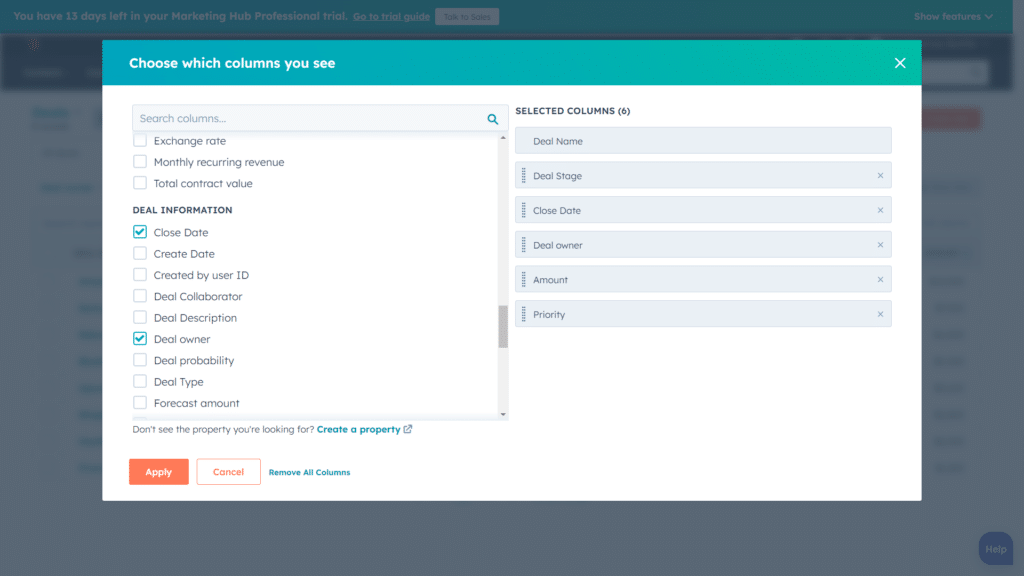
This level of customization is fantastic for SMBs looking to tailor their CRM to their business needs.
We think HubSpot’s pipeline customization capabilities make it perfect for the following industries:
- Marketing Agencies
- Real Estate Agents
- Financial Advisors
- Insurance Agents
- Healthcare Providers
- Hospitality
- Niche SMBs
Once we had everything customized how we wanted it, here’s how our deals pipeline looked.
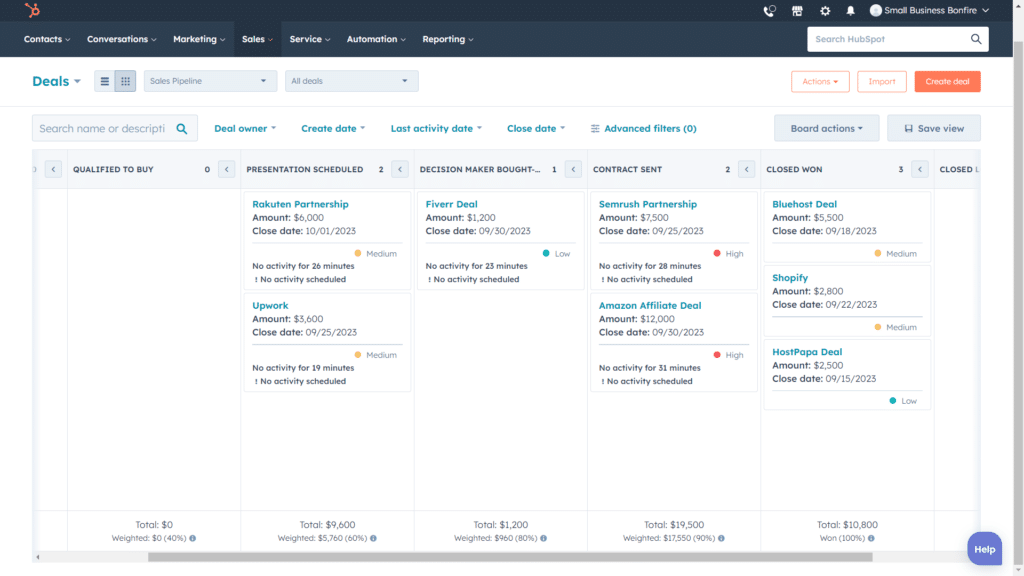
As you can see, everything is clear and organized, making it easy to track and manage each deal through the sales process.
We especially loved the drag-and-drop functionality that lets us move deals through the pipeline without a second thought.
Our takeaway: HubSpot offers some of the best pipeline management in the biz. It’s easy to use, powerful, and highly customizable.
With HubSpot, you can easily close more deals, streamline your sales pipelines, and nurture leads!
Scheduling meetings with a busy team can be a pain.
Thankfully, HubSpot offers an intuitive meeting scheduling feature that eliminates the back-and-forth.
You can easily schedule meetings with internal team members or external clients right from your CRM.
For example, we set up a quick company meeting (in less than 5 minutes) and invited the team via a link.
Here’s how it looked from our perspective.
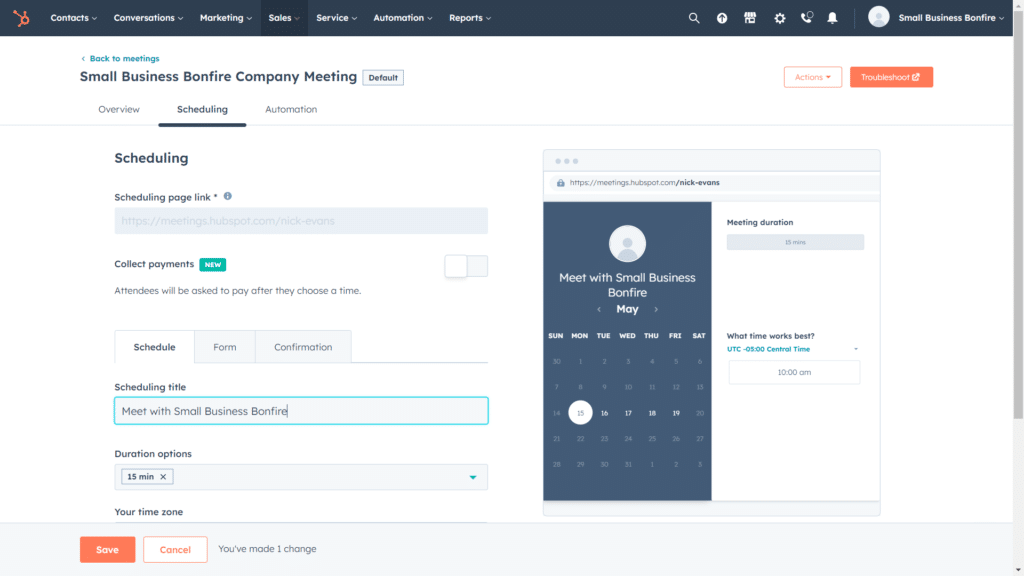
This feature is a huge time-saver for SMBs juggling multiple meetings and appointments. Trust us when we say it’ll help get your team on the same page for meetings.
One of the stand-out features of HubSpot is its integrated support ticketing system.
This feature allows your clients to easily reach out for assistance through the following channels:
- Phone
- Chatbots
- Live chat
The cool thing is any communication or request from a client gets automatically converted into a support ticket and shows up on your ticket dashboard.
This makes the customer support process smoother and ensures that no client queries slip through the cracks.
The support ticketing system is customizable, so you can tailor it to fit your business needs.
You can easily categorize, prioritize, and track support tickets, ensuring you promptly respond to all client requests.
Check out the screenshot below to see the ticket dashboard customization.
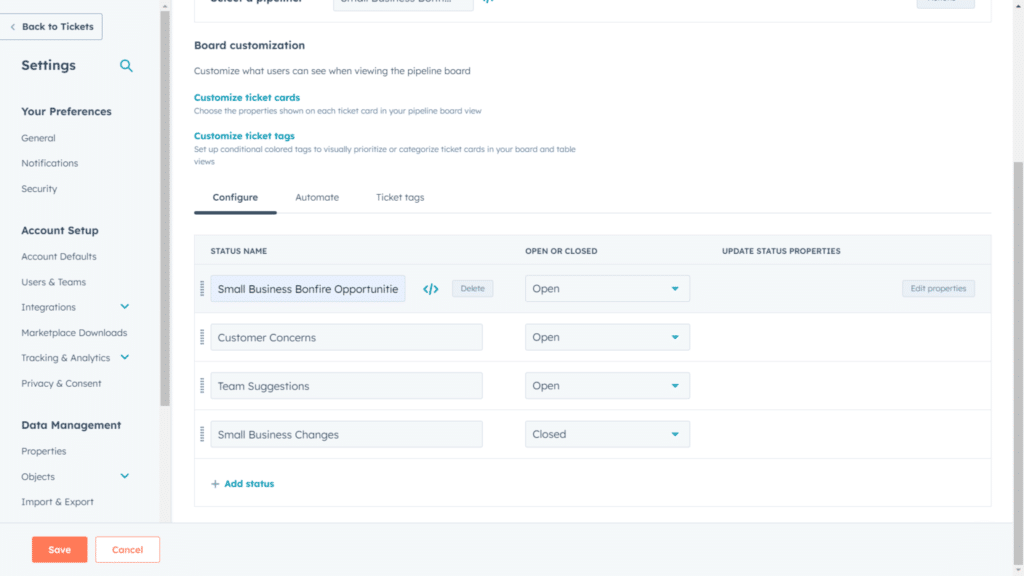
We found the ticket dashboard was user-friendly and intuitive during our three-month testing period.
Take a look at our tickets dashboard (during our six months of testing)!

The clear, easy-to-read layout and ease of use helped us improve our efficiency and productivity regarding customer support.
We think the ticketing system is a valuable asset of HubSpot that SMBs can use to level up their customer service!
Imagine if you could read your customer’s mind.
That’s technically impossible, but HubSpot’s customer feedback survey feature comes pretty close.
You can easily set up surveys to get feedback and insights directly from your customers.
The best part is you can customize the questions, create multiple surveys for different purposes, and schedule them according to your needs.
With HubSpot, we were able to create the following survey types:
- Customer support
- Customer satisfaction
- Customer loyalty
- Custom survey

We especially loved how easy HubSpot made it to share the surveys and collect responses.
This feature is perfect for SMBs looking to boost customer engagement (and gather valuable feedback).
Our verdict: HubSpot takes customer feedback to the next level with its versatile and user-friendly survey creation.
Customers want quick and easy ways to connect with businesses in today’s fast-paced world.
That’s where live chat comes in.
HubSpot offers a seamless live chat integration that you can use on your website or social media pages.
We started testing this feature by creating a chat widget with HubSpot’s helpful live chat builder.
Here’s a quick look at the creation process.

We were able to easily customize the following with HubSpot’s live chat:
- Logo
- Colors
- Custom messages
Once we finished our customization, we could embed the code directly on our site. We noticed a significant increase in engagement and leads from our website once we added the live chat feature.
Our impression: HubSpot’s live chat is easy to set up, customize, and use. It’s a great way for SMBs to improve customer communication and boost conversions on their website.
HubSpot offers a fully-fledged content management system (CMS) that allows SMBs to create, publish, and manage content all in one place.
Here’s what we love about HubSpot’s CMS:
- It’s easy to use
- Templates for different types of content
- Integrated SEO tools
- Content optimization suggestions
We especially loved the website templates (pictured below) that allowed us to create powerful web pages without coding knowledge.
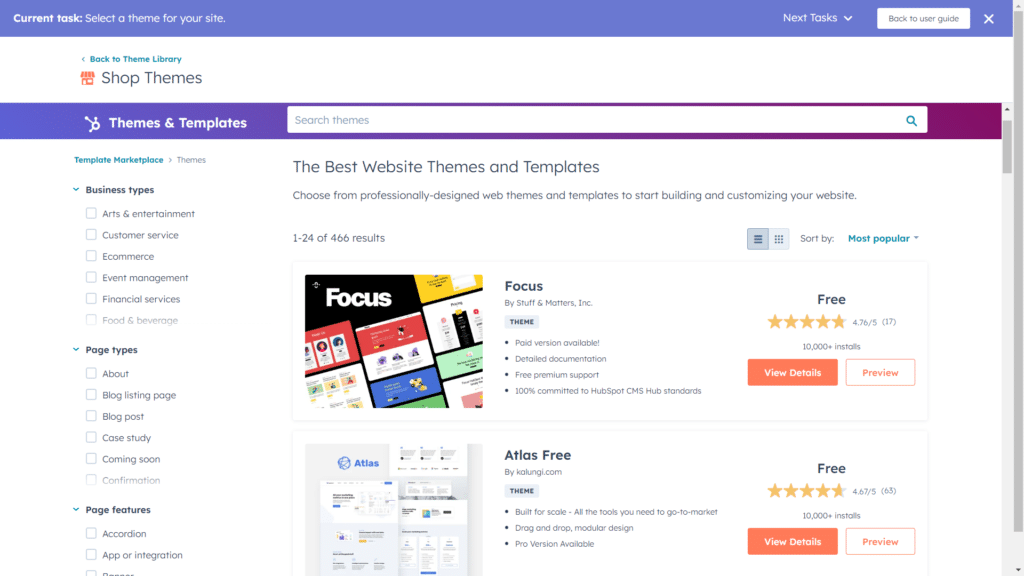
These are perfect for beginners getting their start in web design.
We created several web pages during our three-month testing period with HubSpot.
Here’s a quick peek into the creation process (to give you a better idea).

We also want to shout out the integrated SEO tools that helped us optimize our content for search engines with many helpful suggestions.
Our opinion: HubSpot’s CMS is perfect for SMBs who want to create a professional and engaging online presence. You can use a lot of this functionality for free, making it perfect for startups as well.
Don’t sleep on email marketing!
HubSpot offers a variety of email marketing features to help you do the following:
- Create, send, and track your email campaigns
- Personalize emails
- A/B test subject lines and content
- Utilize advanced marketing automation
- Manage your email list with segmentation options
From customizable templates to in-depth analytics, this CRM has everything SMBs need to run successful email marketing campaigns.
We tested this feature by selecting one of their gorgeous starter templates (shown below).

From there, we were brought to a fantastic drag-and-drop editor where we could easily add the following to each email:
- Images
- Text
- Social links
- Videos
- Buttons
Here’s how it looked during our testing.
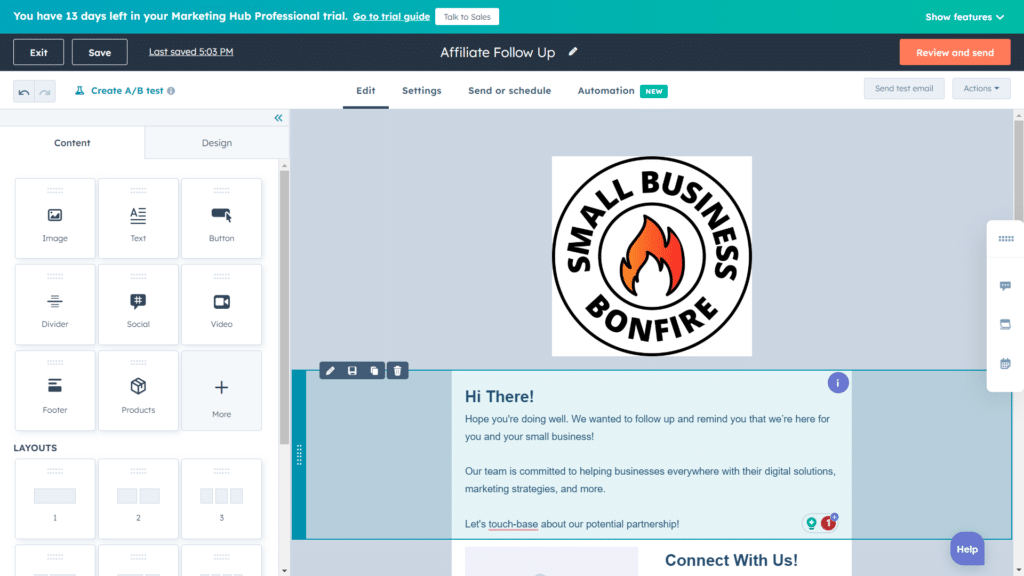
Essentially, HubSpot made it easy to create professional-looking email templates (within minutes) that we could send en masse to our clients.
It saved us a ton of time and effort, which is crucial for SMBs with limited resources.
The right automation can be a game-changer for SMBs.
HubSpot offers a powerful automation tool that allows you to automate repetitive tasks and streamline your processes.
You can create workflows based on triggers, actions, and conditions to save time, reduce error, and improve efficiency.
We were impressed by how easy it was to set up a workflow with HubSpot.
HubSpot allows you to automate the following:
- Email marketing
- Lead management & nurturing
- Contact management
- Deals and sales pipeline
- Ticketing
- Scheduling & notifications
Plus, they provide helpful templates to take all the guesswork and headaches out of the equation for beginners!
Here’s a look at a few helpful automation templates.

With HubSpot, we felt like tech wizards, eliminating manual tasks and freeing up more time to focus on growing our business.
Here’s an example of an automation we created (in less than 5 minutes) to capitalize the first letter of each contact’s first and last name.

The bottom line: When it comes to automation, HubSpot offers some of the very best on the market. If you’re serious about scaling, we recommend you give it a try.
Pipeline CRM Top Features
Next, we’ll discuss our top favorite features offered by Pipeline.
If you can’t manage your contacts, you can’t manage your business.
Luckily, Pipeline CRM offers advanced contact management capabilities that help SMBs keep track of everything to do with customer relationships.
We tested this feature by doing the following:
- Adding in our B2B affiliate marketing contacts
- Sorting contacts into lists based on different criteria (e.g., industry, location, and deal stage)
- Sending personalized emails to targeted contact lists
Spoiler alert: It was awesome.
Check out how it looked every time we added a new contact.
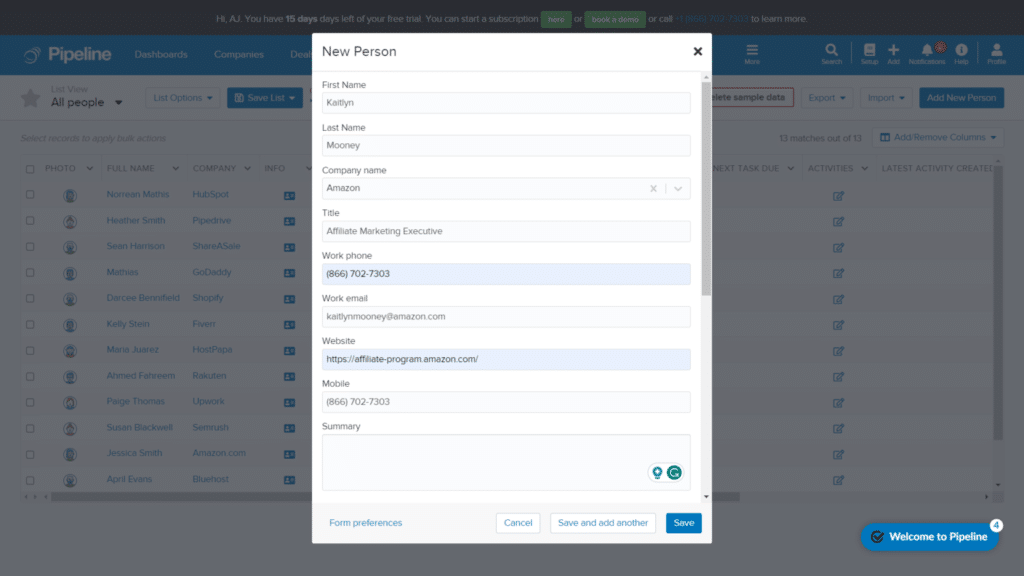
Within each card, we could easily add and edit the following info:
- Name
- Company name
- Title
- Contact info
- Website
- Notes
- Custom fields
We could easily customize the dashboard to fit SBB’s needs and set reminders and tasks for each contact.
Here’s our contact dashboard (to give you a better idea).

At the end of the day, Pipeline isn’t breaking any records with its contact management. But it is easy to use, powerful, and affordable—what’s not to love?
Learning from your mistakes and making data-driven decisions is also crucial for any SMB.
Pipeline CRM offers a comprehensive dashboard view that allows you to track metrics and KPIs in real time.
We tested this feature by adding the following widgets to our dashboard:
- Pipeline progress
- Agenda
- Quotes won/lost ratio
Here’s a look at our sales dashboard during our three-month testing period.

This helped us to stay organized and focused on our sales goals, making it easier to identify areas for improvement.
If you want to empower your sales team with data and insights, the dashboard view on Pipeline CRM is definitely a feature to consider.
With a name like Pipeline CRM, you can bet that this CRM offers top-notch pipeline management tools.
We tested these features by adding some affiliate marketing deals at Small Business Bonfire.
To do this, we simply clicked “add new deal” and filled out the following fields:
- Owner
- Deal name
- Pipeline
- Stage
- Close date
- Amount
- Industry
- Company name
Here’s how it looked from our perspective.

We want to highlight one feature we thought was especially awesome—the automatic company-to-customer converter.
This feature allowed us to convert a company record into a customer record with just one click.
Here’s a screenshot to paint a picture for you.
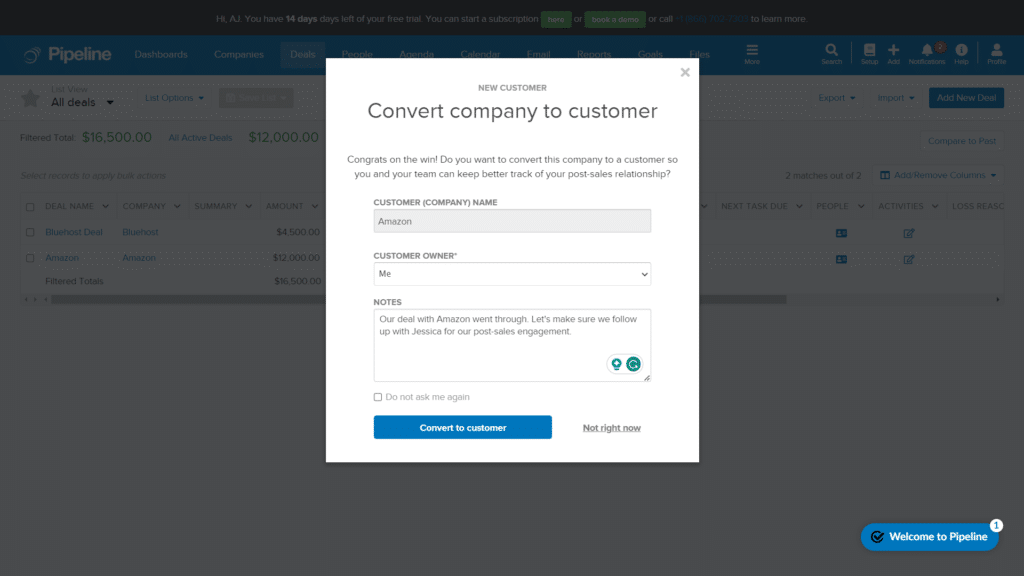
With Pipeline, we could easily track a customer’s journey from start to post-sales (with minimal effort).
We also loved our clear and easy-to-read sales dashboard (shown below), which stood out amongst the competition as being incredibly solid.
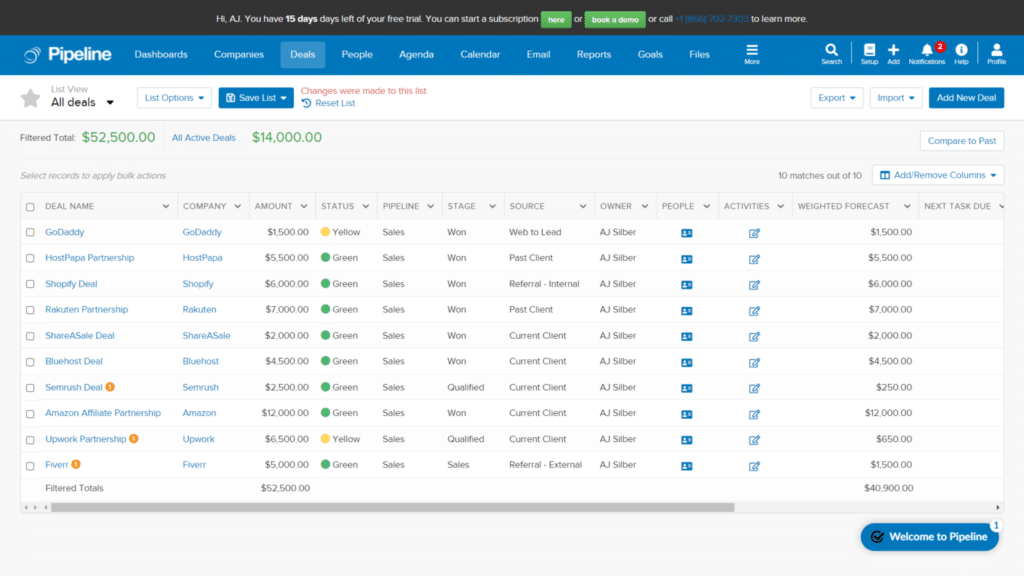
With a name like Pipeline CRM, it’s no wonder they deliver fantastic sales pipeline management!
As an owner of a scaling business, managing your day-to-day tasks and staying on track is no easy feat.
Pipeline CRM offers an agenda-tracking feature that helps SMB owners stay organized and productive.
Here are some things we loved about this feature:
- Notifications: Pipeline CRM incorporates an efficient notification system for task or meeting updates, with options for email, in-app notifications, or both.
- Task Management: Pipeline seamless creation, assignment, and tracking of tasks, showcasing clear responsibility and progress updates.
- Integrations: The CRM sales software with other tools like Google Calendar and Office 365, centralizing operations and eliminating the need to switch between tools.
- Customizable Dashboard: The CRM solution offers a comprehensive view of tasks, meetings, and deadlines with the option to tailor the layout per your unique needs.
- Meeting Scheduler: Pipeline CRM simplifies meeting setup and management, allowing the scheduling of meetings, setting reminders, and task assignments for meeting preparations.
In addition, the CRM also offers a calendar view where you can visualize your tasks, meetings, and deadlines in a calendar format to better manage your time.
Here’s a quick look at our SBB calendar while testing Pipeline CRM.

We liked that we could easily add new tasks by clicking on the calendar.
For example, here’s a follow-up task we could add to the calendar in seconds.
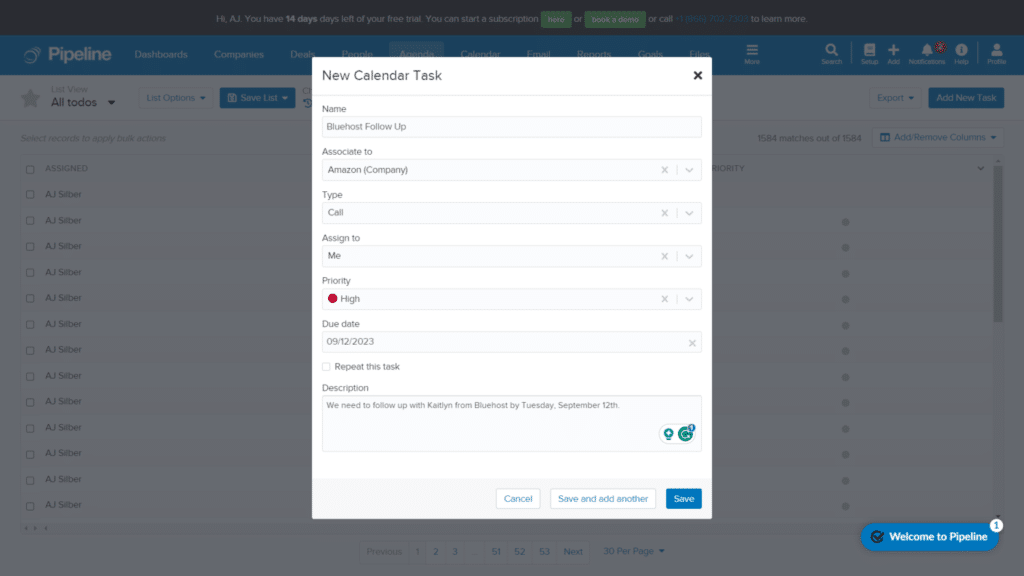
Based on our six months of testing, it’s safe to say that Pipeline CRM offers some impressive calendar and agenda-tracking tools to help streamline any SMB’s daily operations.
Managing and interpreting data effectively plays a pivotal role in driving business success.
Pipeline CRM’s powerful reporting and sales forecasting feature stands out in this regard.
We thoroughly enjoyed testing this feature due to its flexibility and robustness.
Here are some highlights of what we liked:
- Customization: We were able to create custom reports tailored to our specific needs, making it simple to analyze data relevant to our business.
- Data visualization: The feature offers visually appealing and easy-to-understand graphs and charts, which makes data interpretation seamless.
- Real-time reporting: Reports are instantly updated as data comes in, providing real-time insights and keeping us updated on key metrics.
- Drill-down capabilities: We liked that we could drill down into the individual records directly from reports, an excellent tool for deep-diving into data.
- Integration with dashboard: The seamless integration of reports with the dashboard feature made accessing and reviewing data regularly straightforward.
In our testing period, this feature demonstrated a high level of efficacy in offering clear, concise, and actionable insights.
Pipeline CRM delivers powerful email automation and sync capabilities, simplifying and enhancing email communication strategies.
We got started by syncing our Small Business Bonfire Gmail account.
Here’s a quick look into the one-step integration process.
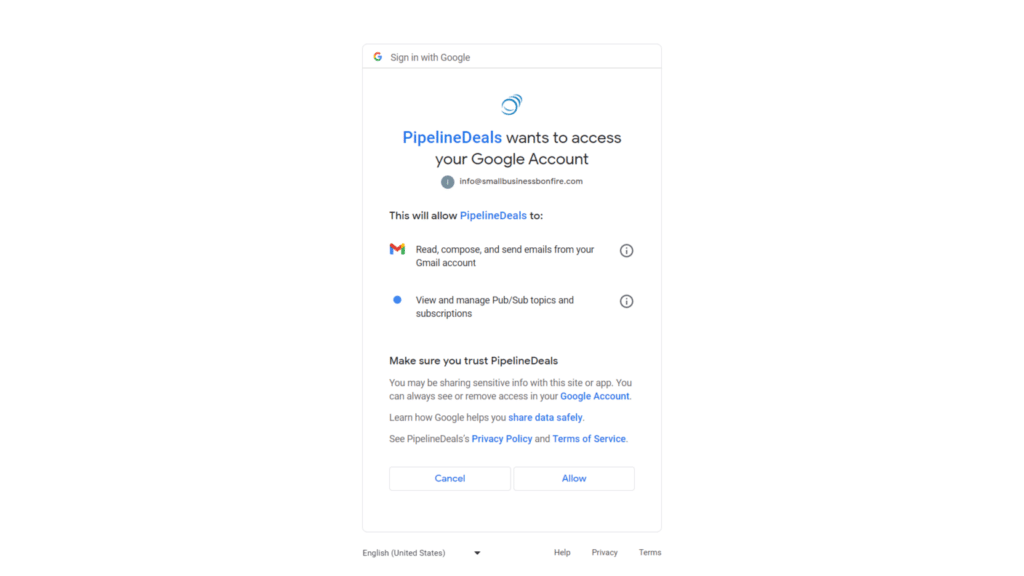
Once the email integration was complete, we experienced the following benefits:
- Email tracking: Monitor email opens and clicks, helping to identify more engaged leads.
- Email organization: Tie emails to deals, contacts, and cases, making it easier to track interactions with a specific contact.
- Automated follow-ups: Set up automatic follow-up emails based on specific triggers, ensuring no lead is overlooked.
- Bulk emails: Send large volumes of emails, saving time on individual drafting and dispatching.
- Email templates: Create and use personalized, professional templates for consistent branding.
- Email scheduling: Plan communications in advance to ensure optimal timing.
Pipeline CRM’s email integration significantly boosts efficiency and productivity, making it easier and more effective to build relationships with customers and leads through email.
HubSpot Vs. Pipeline CRM Features Winner: HubSpot
AJ’s Take: HubSpot is an all-in-one marketing, service, and sales powerhouse of features. This makes it hard for any platform to compete. When it comes to features, HubSpot dominates this round.
After testing, we compiled a thorough list of our favorite CRMs for Small Businesses. Check it out now! The list might surprise you.
HubSpot Vs. Pipeline CRM: Customer Service
You want to ensure that the CRM you choose offers great customer support.
We’ll break it down for you in the following categories:
- Availability
- Knowledge base
- Training
- Responsive support
HubSpot Customer Service
Let’s see how HubSpot performs in the following categories:
- Availability: HubSpot offers 24/7 email, phone, and live chat support.
- Knowledge base: HubSpot has a robust knowledge base with articles, videos, and webinars to help users navigate their platform.
- Training: HubSpot offers free online training courses through their HubSpot Academy, covering topics such as inbound marketing and sales features, CRM usage, and more.
- Responsive support: With HubSpot, the max we waited was less than 30 minutes!

Pipeline CRM Customer Service
This is how Pipeline CRM’s customer service stacked up:
- Availability: Pipeline CRM offers 24/5 email, phone, and live chat support.
- Knowledge base: While Pipeline CRM does have a knowledge base with articles and tutorials, it is not as comprehensive as HubSpot’s.
- Training: Pipeline CRM offers free online training courses through Pipeline University, covering topics such as CRM usage and sales strategies.
- Responsive support: We only waited a max of about 2 hours for Pipeline’s support team.
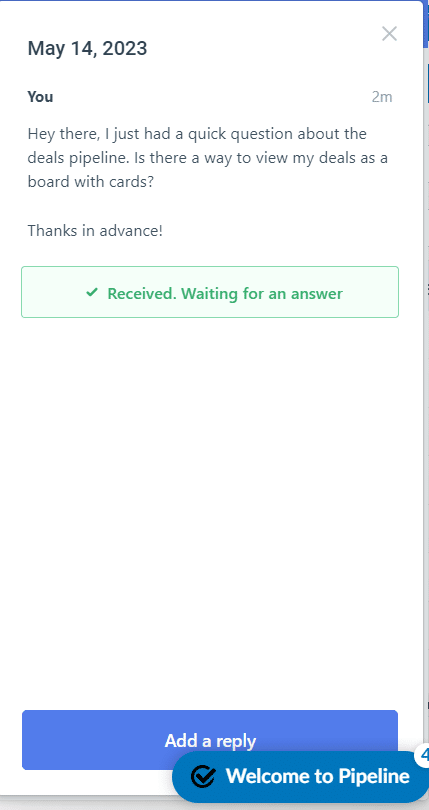
Pipeline CRM Vs. HubSpot Customer Service Winner: HubSpot
AJ’s take: Both platforms offer stellar customer service, but HubSpot comes out on top because of its lightning-fast response times and impressive HubSpot Academy.
Pipeline CRM Vs. HubSpot: Integrations
Integrations are a vital aspect to consider when choosing a CRM. They allow for seamless communication and data transfer between different tools, making your business processes more efficient.
Here’s how HubSpot and Pipeline CRM compare in this category.
HubSpot Integrations
When it comes to integrations, HubSpot offers a wide variety of options (via their App Marketplace) to connect with other platforms and tools.
Some popular integrations include the following:
- Slack
- MailChimp
- Zapier
- Trello
- Asana

Our experience with HubSpot is that if you need an integration, chances are, they have it.
HubSpot also offers a great Zapier integration for thousands of third-party apps.
Pipeline CRM Integrations
Pipeline offers some great native integrations as well.
These include the following:
- Mailchimp
- Outlook
- QuickBooks Online
- Zapier
- Excel

Like HubSpot, Pipeline offers a great Zapier integration for tons more add-ons.
HubSpot Vs. Pipeline CRM Integrations Winner: HubSpot
AJ’s Take: Pipeline delivers some great integrations, but it’s nothing compared to HubSpot’s massive marketplace full of frequently updated integrations. When it comes to integrations, there’s no stopping HubSpot.
HubSpot Vs. Pipeline CRM: Ease of Use
Ease of use is one of the most important factors to consider when choosing a CRM for your small business.
HubSpot Ease of Use
HubSpot’s interface is an intuitive and user-friendly CRM with an easy-to-navigate dashboard and simple drag-and-drop features.
The platform offers customizable templates and pre-made workflows to make campaign creation a breeze.
They also offer free training through their HubSpot Academy, making it easy for anyone to learn the platform.
Pipeline CRM Ease of Use
Pipeline CRM has a straightforward and clean user interface, making it easy to find what you need quickly.
The platform also offers customizable templates and pre-made workflows, but not as many options as HubSpot.
Pipeline’s learning curve is slightly higher than HubSpot, with less intuitive features and a less comprehensive knowledge base.
Pipeline CRM Vs. HubSpot Ease of Use Winner: HubSpot
AJ’s Take: While both platforms offer user-friendly interfaces, HubSpot takes the cake with its easy drag-and-drop features, customizable templates (for complex campaigns), and extensive knowledge base.
Pipeline CRM Vs. HubSpot: Best Mobile App
Having all of your CRM’s features easily accessible on a mobile app is essential for SMBs with sales teams working remotely or on the go.
So, let’s see how Pipeline CRM and HubSpot do in this section.
HubSpot Mobile App
HubSpot’s mobile app is available on both iOS and Android devices, giving users access to all of its features, such as:
- Deal management
- Contact management
- Ticket management
- Task management
- Marketing email
- Meeting links
- Activity feed
The HubSpot app is truly impressive. It’s like having a mini version of the platform right in your pocket.

Pipeline CRM Mobile App
Pipeline CRM also has a mobile app available on iOS and Android.
Some great features of Pipeline CRM’s mobile app include the following:
- Email tracking
- Customer data management
- Deal management
- Real-time updates
- Task management
Pipeline’s app allows you to do most of the critical things you need to do on the go, but it’s not as comprehensive as HubSpot’s.
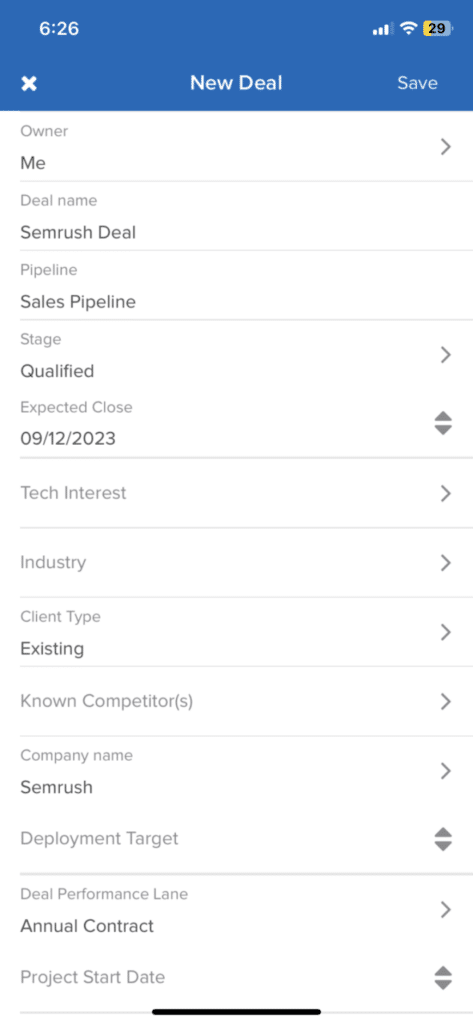
HubSpot Vs. Pipeline CRM Mobile App Winner: HubSpot
AJ’s Take: Pipeline has a decent mobile app, but HubSpot takes the lead with its comprehensive features and user-friendly interface. If you’re always on the go, HubSpot’s mobile app is the way to go.
HubSpot Vs. Pipeline CRM: Knowledge Center
Additionally, self-service is an essential aspect of CRMs, allowing users to find answers quickly without relying on customer support.
So, how do these platforms stack up? Let’s find out!
HubSpot Knowledge Center
HubSpot CRM provides its users with an incredibly vast and versatile library of resources within its knowledge center.
This includes detailed how-to articles, in-depth tutorials, and insightful webinars designed to empower its users to make the most of the platform.
All resources are organized intuitively, making it incredibly easy to find the information you’re looking for. With HubSpot, you’re never left in the dark. Help is just a click away.
Pipeline CRM Knowledge Center
Pipeline offers an online help center that definitely gets the job done.
There are plenty of resources available, and the information is presented well.
However, it’s not as extensive or organized as HubSpot’s knowledge center.
Pipeline CRM Vs. HubSpot Knowledge Center Winner: HubSpot
AJ’s Take: While Pipeline offers a decent knowledge center, HubSpot’s extensive and well-organized resources take the win. HubSpot is the best option if you’re looking for a platform with top-notch self-service capabilities.
Pipeline CRM Vs. HubSpot: Limitations
No platform is perfect, and that includes our two competitors. Let’s look at some of the limitations of each.
HubSpot Limitations
Here are some limitations that HubSpot has:
- Advanced plans can be pricey: While HubSpot offers a free plan, its Professional and Enterprise plans can get expensive for small businesses. We’re talking about up to $5,000/month.
- The CMS Hub customization is limited: While the CMS Hub does come with some basic customizable templates, you can’t fully customize your website’s design (without coding knowledge).
Pipeline CRM Limitations
These are some limitations that Pipeline CRM has:
- No free plan: Unlike HubSpot, Pipeline CRM offers no free plan. Their basic plan starts at $25/month per user.
- Limited project management: Pipeline lacks any real project management capabilities outside managing your daily agenda.
- Limited marketing capabilities: If you’re looking for a CRM to handle your marketing needs, Pipeline may not be the best option. The platform doesn’t offer advanced marketing features like landing page creation or A/B testing.
HubSpot Vs. Pipeline CRM Limitations Winner: Tie
AJ’s Take: It’s a tie! Both platforms have limitations, but it ultimately depends on your business needs. If you’re looking for advanced features and customization options, HubSpot may be worth the investment. However, if you have a smaller budget and need more basic CRM capabilities, Pipeline could be the better choice.
HubSpot Vs. Pipeline CRM: Which is Best for Small Businesses?
So there you have it—HubSpot is our clear winner!
HubSpot is your best bet if you want to manage sales, service, and marketing all in one place. The CRM heavyweight also offers many free tools to take advantage of.
However, if you’re a business on a budget looking to ramp up your pipeline management, Pipeline is a fantastic option!
Both platforms offer great 14-day free trials for their advanced plans, so check them out today!
Newsletter Signup
Join The Leads Field Guide Newsletter for tips, strategies and (free) resources for growing your leads, and closing more deals.

